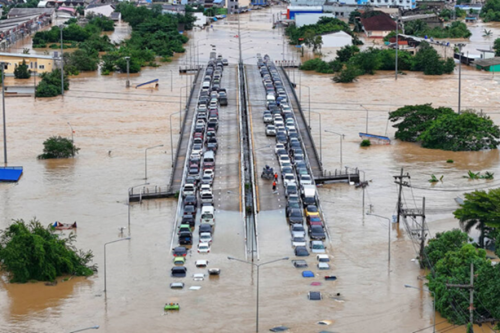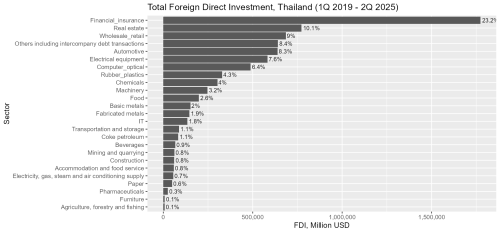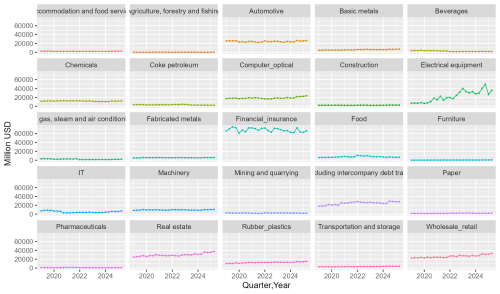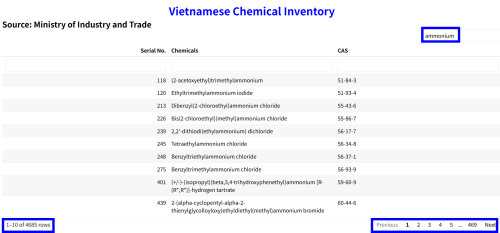Picture from: Prachachat Business Online
In late November 2025, Hat Yai, Songkhla — a key business, trade, and logistics hub in southern Thailand — faced the largest flood in decades due to heavy rainfall and water flowing from higher areas.
Many business districts were submerged, with roads cut off, buildings, shops, hotels, transport vehicles, and goods all temporarily halted. Although the flooding lasted only a few days, it disrupted cash flow from retail, tourism, wholesale, and logistics, as well as supply chains and cross-border/international trade. Many businesses immediately lost revenue, some lost inventory and assets, and the real estate sector saw a notable impact on investor confidence.
Picture from: Facebook, Royal Thai Army
After the water receded, residents returned home to assess the damage, but many families faced losses of both property and loved ones. The government has reported 140 fatalities, with more people still missing.
Economic recovery in the southern region, if no further flooding occurs, could take around one month, but restoring major infrastructure — such as roads, drainage systems, buildings, real estate markets, and investor confidence — may take several months to 1–3 years.
Krungsri Research has assessed the economic damage from the 2025 southern floods under three model scenarios.
|
Case |
Damage [THB] |
Damage [USD] |
Damage (JPY) |
|
Minimum case |
11,800,000,000 |
330,000,000 |
49,000,000,000 |
|
Base case |
19,700,000,000 |
550,000,000 |
82,000,000,000 |
|
Worst case |
23,600,000,000 |
660,000,000 |
110,000,000,000 |
Note: Calculated approximate exchange rates (1 USD ≈ 35.7 THB, 1 JPY ≈ 0.24 THB).
The president and advisor to the University of the Thai Chamber of Commerce's Center for Economic and Business Forecasting revealed that Thailand's GDP forecast for 2025 has been revised down to 1.9% from 2% due to severe flood disasters. While in 2026, it is estimated that the Thai economy will expand by 1.6%.
This crisis not only caused economic losses but also claimed lives. We extend our deepest condolences to the families affected. The event underscores the need for businesses to strengthen disaster preparedness and supply chain resilience to ensure economic continuity. With coordinated recovery efforts, Hat Yai can rebuild stronger and regain its economic vitality.
Information from :
https://www.hfocus.org/content/2025/12/36242
https://www.facebook.com/royalthaiarmyRTA
https://www.bangkokbiznews.com/business/economic/1210267?utm_source=chatgpt.com
(Bee)







